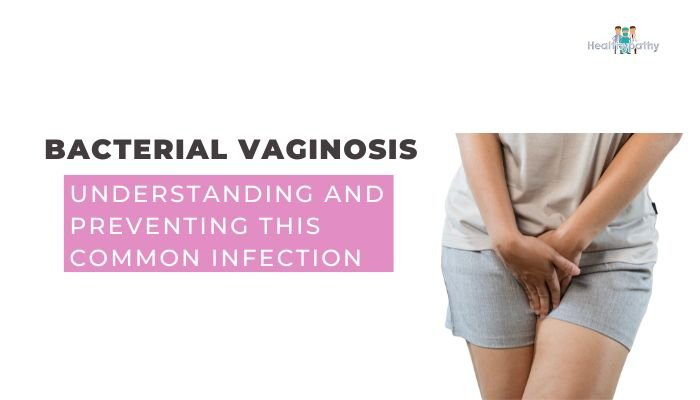Introduction
Preeclampsia is a pregnancy complication typically arising after 20 weeks of gestation, marked by high blood pressure and, in many cases, protein in the urine. Though its exact cause remains somewhat unclear, preeclampsia can affect various organs and endanger both maternal and fetal health if untreated. By knowing the warning signs—and working closely with healthcare providers—women can often detect and manage preeclampsia before it leads to severe complications. This article explores essential risk factors, typical symptoms, and the importance of early intervention.
Understanding Preeclampsia
Key Features
- Elevated Blood Pressure (Hypertension): Readings of 140/90 mmHg or higher on two occasions at least four hours apart after 20 weeks of pregnancy in a previously normotensive woman.
- Proteinuria: Protein detected in the urine—often a hallmark of kidney involvement. Although recent guidelines allow for diagnosing preeclampsia without proteinuria if other criteria are met (e.g., abnormal blood tests for liver or kidney function).
Potential Complications
Untreated or severe preeclampsia can escalate into eclampsia, involving seizures, or lead to conditions like HELLP syndrome (hemolysis, elevated liver enzymes, low platelet count). These endanger maternal life and can affect fetal growth or cause preterm birth.
Risk Factors for Preeclampsia
Though any pregnant woman can develop preeclampsia, certain factors raise susceptibility:
- First Pregnancy: New immune adaptation might be less efficient.
- History of Preeclampsia: If preeclampsia occurred in a past pregnancy, risk for recurrence is higher.
- Chronic Hypertension or Kidney Disease: Pre-existing conditions often complicate pregnancy.
- Autoimmune Disorders: Conditions like lupus or antiphospholipid syndrome increase risk.
- Multiple Gestation: Twins, triplets, or more put extra strain on the body.
- Obesity or Diabetes: Metabolic and vascular changes predispose to hypertension.
Knowing personal risk factors helps guide monitoring intensity during prenatal visits.
Warning Signs and Symptoms
High Blood Pressure
The primary indicator. Often measured at each prenatal checkup. If readings stay elevated or rise suddenly, doctors become vigilant for other preeclampsia symptoms.
Sudden Swelling (Edema)
Some swelling in ankles or feet can be normal in pregnancy, but rapid or severe swelling in the face, hands, and ankles—especially if it appears abruptly—may signal fluid retention linked to preeclampsia.
Protein in Urine
Your healthcare provider checks urine samples for excess protein. Persistent proteinuria can be a sign the kidneys are under stress.
Severe Headaches
Persistent headaches that don’t resolve with rest or hydration, especially if they’re described as throbbing or intense, can reflect hypertension or changes in blood flow.
Vision Changes
Blurred vision, flashing lights, or spots indicate potential issues with blood pressure affecting the brain or retina. This symptom is always worth mentioning to your doctor immediately.
Upper Abdominal Pain
Pain under the ribs on the right side can relate to liver swelling or distress, possibly linked to severe preeclampsia or HELLP syndrome.
Sudden Weight Gain
A quick jump in weight—over a few days—often signals abnormal fluid retention. It’s a reason to check blood pressure and possibly do further labs.
Diagnosis and Monitoring
If preeclampsia is suspected:
- Blood Pressure Checks: More frequent measurements for consistent elevations.
- Urine Tests: Checking for protein levels and other abnormalities.
- Blood Tests: Evaluate kidney and liver function, platelet counts.
- Fetal Monitoring: Ultrasounds to assess growth, possibly nonstress tests for fetal well-being.
A diagnosis usually hinges on meeting blood pressure criteria plus one or more organ dysfunction signs (e.g., proteinuria, abnormal labs).
Management Strategies
Mild Preeclampsia
For mild cases at earlier gestation:
- Close Monitoring: Frequent prenatal visits, blood pressure checks, and labs.
- Medication: Blood pressure drugs can help keep readings stable. Low-dose aspirin after the first trimester may reduce risk in high-risk patients.
- Rest and Possible Activity Modifications: Advice may include partial bed rest, though complete bed rest is seldom mandatory.
Severe Preeclampsia or Approaching Term
When preeclampsia is severe or pregnancy is near term:
- Hospitalization: Inpatient care for intravenous medication and close observation.
- Steroids for Fetal Lungs: If premature delivery is likely.
- Magnesium Sulfate: To prevent seizures (eclampsia).
- Delivery: If risks to mother or baby escalate, induction or C-section is often recommended, sometimes even preterm, to prevent complications from advancing disease.
Postpartum Considerations
While delivering the placenta typically alleviates preeclampsia, blood pressure and health can remain unstable for some days or even weeks after birth. Continuing monitoring postpartum is crucial.
Prevention and Lifestyle Support
Regular Prenatal Care
Early detection can minimize complications. Attending prenatal appointments ensures timely management if signs arise. If preeclampsia risk is high, additional screening and possibly daily low-dose aspirin from early pregnancy might be advised.
Healthy Habits
Though not guaranteed to prevent preeclampsia, general wellness approaches help reduce overall risk:
- Balanced Diet: Focus on nutrient-rich foods, manageable salt intake, and adequate hydration.
- Physical Activity: Light to moderate exercise supports cardiovascular and metabolic health.
- Weight Management: Achieving a healthy weight before pregnancy lowers risk for gestational hypertension.
Know Your Risks
If you have a personal or family history of preeclampsia, or pre-existing conditions like chronic hypertension, let your healthcare team know early. They can formulate a specialized plan for frequent checkups and tests.
Conclusion
Preeclampsia can emerge quietly, manifesting as high blood pressure and subtle body changes after mid-pregnancy. Recognizing its early warning signs—like persistent headaches, swelling, or vision disturbances—enables rapid intervention and a safer outcome. With consistent prenatal care, watchful monitoring, and healthy lifestyle choices, women can reduce the potential harm of preeclampsia and protect both their own health and that of their developing baby. If you experience any suspicious symptoms, contacting your doctor promptly is the surest route to safeguarding maternal and fetal well-being.
References
- American College of Obstetricians and Gynecologists (ACOG). Preeclampsia and High Blood Pressure during Pregnancy. 2022.
- World Health Organization (WHO). Recommendations for Prevention and Treatment of Preeclampsia and Eclampsia. 2018.
- Sibai BM, Stella CL. Diagnosis and management of atypical preeclampsia-eclampsia. Am J Obstet Gynecol. 2009;200(5):481–487.
- U.S. Preventive Services Task Force. Low-Dose Aspirin Use for the Prevention of Morbidity and Mortality from Preeclampsia. 2020.







